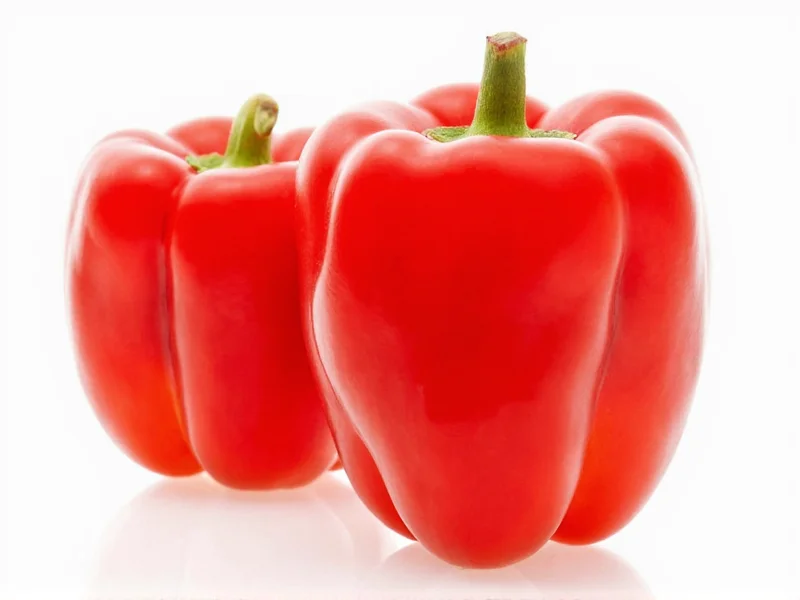When selecting bell peppers for recipes requiring natural sweetness, understanding the sugar development process across different color varieties is essential. Bell peppers start green and gradually change color as they mature on the vine, with each stage bringing chemical changes that directly impact flavor profile. The sweetness progression follows a clear biological pattern: as chlorophyll breaks down during ripening, sugars accumulate while bitterness decreases.
The Ripening Process and Sugar Development
Bell peppers undergo a fascinating biochemical transformation as they mature. Initially green due to chlorophyll, they gradually develop carotenoids—yellow (lutein), orange (beta-carotene), and red (lycopene)—as they ripen. This maturation process directly correlates with increased sugar content and decreased capsaicinoids (though bell peppers contain negligible amounts of capsaicin compared to hot peppers).
Research from the USDA Agricultural Research Service confirms that fully mature yellow bell peppers reach peak sugar concentration before developing the deeper pigments of orange and red varieties. This makes yellow peppers the sweetest point in the ripening spectrum before certain compounds begin converting sugars into other phytochemicals.
| Bell Pepper Color | Approximate Brix Level | Sugar Content | Relative Sweetness | Days to Maturity |
|---|---|---|---|---|
| Green | 2-3° Brix | 2-3% | Mildly bitter | 60-75 days |
| Yellow | 5-6° Brix | 5-6% | Most sweet | 80-90 days |
| Orange | 4-5° Brix | 4-5% | Very sweet | 85-95 days |
| Red | 4-5° Brix | 4-5% | Sweet with earthy notes | 90-100 days |
Why Yellow Bell Peppers Achieve Peak Sweetness
The sweetness peak at the yellow stage results from optimal sugar accumulation before certain metabolic pathways shift in fully mature red peppers. As explained in HortScience journal studies, yellow bell peppers contain higher concentrations of fructose and glucose while maintaining lower levels of bitter-tasting compounds compared to their red counterparts.
Commercial growers monitor sugar content using refractometers measuring Brix levels. Field tests consistently show yellow varieties reaching 5.5-6° Brix, while red peppers typically stabilize around 4.5-5° Brix as additional time on the vine converts some sugars into complex carotenoids and other phytonutrients.
Practical Applications in Cooking
Understanding which bell pepper is sweetest transforms culinary applications. Professional chefs leverage this knowledge when:
- Selecting yellow peppers for raw applications like salads and crudités where maximum sweetness shines
- Choosing red peppers for roasted dishes where caramelization enhances their earthy-sweet complexity
- Using green peppers in cooked applications where their grassy notes complement other ingredients
- Creating pepper blends that balance sweetness across the color spectrum
Food scientists at Cornell University's School of Hotel Administration note that yellow bell peppers' higher sugar content makes them ideal for applications requiring natural sweetness without added sugars—particularly valuable in diabetic-friendly and clean-label recipes.
Factors Influencing Sweetness Beyond Color
While color provides the most reliable indicator of sweetness, several other factors affect sugar content:
- Growing conditions: Peppers grown with consistent watering and adequate sunlight develop higher sugar content
- Varietal differences: Some cultivars like 'Golden Bell' or 'Aristotle' yellow peppers are specifically bred for sweetness
- Harvest timing: Morning harvests yield peppers with higher sugar concentrations than afternoon picks
- Post-harvest handling: Proper storage at 45-50°F maintains sweetness longer than refrigeration
Measuring Sweetness: The Brix Scale Explained
The Brix scale measures soluble solids in produce, primarily representing sugar content. For bell peppers:
- 2-3° Brix: Green peppers (least sweet)
- 4-5° Brix: Red and orange peppers
- 5-6° Brix: Yellow peppers (sweetest)
Commercial growers use handheld refractometers to measure Brix levels in field tests. Home gardeners can identify peak sweetness by checking for full color development, firm texture, and a slightly glossy skin—characteristics most pronounced in perfectly mature yellow varieties.
Common Misconceptions About Bell Pepper Sweetness
Several myths persist about bell pepper sweetness that contradict agricultural research:
- Myth: Red peppers are always sweeter than yellow—Reality: Scientific measurements consistently show yellow peppers have higher sugar content
- Myth: Thicker-walled peppers are sweeter—Reality: Wall thickness relates to variety and growing conditions, not sugar content
- Myth: Pointed bottoms indicate male (less sweet) peppers—Reality: Bottom shape is determined by seed development, not gender or sweetness
These misconceptions often stem from regional growing differences or personal taste perceptions, but controlled agricultural studies confirm yellow bell peppers consistently achieve the highest measurable sweetness.
Selecting the Sweetest Bell Peppers at Market
When shopping for maximum sweetness, look for these characteristics in yellow bell peppers:
- Bright, consistent yellow color without green streaks
- Firm, taut skin with slight glossiness
- Heavy weight for their size (indicating dense flesh)
- Fully developed four-lobed shape
- Intact stem with green color (shows recent harvest)
Avoid peppers with soft spots, wrinkles, or dull coloring, which indicate age and potential sugar degradation. For peak sweetness, use yellow bell peppers within 3-4 days of purchase, as sugar content gradually decreases during storage.











 浙公网安备
33010002000092号
浙公网安备
33010002000092号 浙B2-20120091-4
浙B2-20120091-4